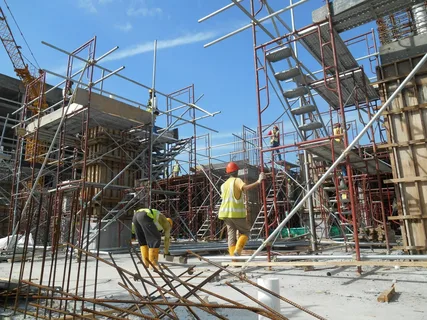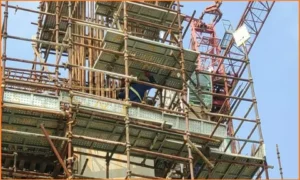Macro Context and Central Entity
In the context of New York City dense built environment and regulatory framework, the central entity under discussion is Scaffolding Companies in NYC. This article explores their services, selection criteria, regulatory environment, and project implications.
Understanding the Role of Scaffolding Firms in NYC
Scaffolding companies in NYC play a critical role in enabling access, protection and structural support for construction, renovation, inspection and facade work across all five boroughs. They service everything from minor repairs to high rise developments and compliance driven inspections such as those mandated under local law.
Core Services and Attributes of Scaffolding Providers
Professional scaffolding firms operating in New York deliver a comprehensive array of services including:
- Supported scaffolding systems: ground based frameworks used for new construction, masonry repairs or facade access
- Suspended scaffold platforms: hanging systems deployed for high rise window cleaning, facade maintenance or inspection work
- Sidewalk sheds and pedestrian protection: temporary structures built to safeguard sidewalk users when work happens above street level
- Engineering and design services: including structural calculations, PE stamped drawings, customised solutions for irregular building geometries
- Permit management and code compliance: firms often handle filings with the New York City Department of Buildings, ensure Local Law 11 and 87 compliance, and manage scheduling, inspections and logistics
- Installation, monitoring and dismantling: safe execution, periodic checks, insurance compliance, worker training and final removal once the job is complete
Why Selection of the Right Provider Matters
Working in New York urban environment means that scaffolding is not just a temporary commodity it is a strategic partner in your project. The right firm contributes to:
- Safety compliance: ensuring public and worker safety, minimizing risk and avoiding violations or work stoppages
- Project scheduling: timely erection and removal impacts the critical path of any renovation or new build
- Regulatory navigation: New York has strict requirements for scaffold systems, particularly near pedestrian walkways and building facades
- Cost containment: beyond rental rates, efficiency in installation, permitting and logistics drives time and budget savings
Key Selection Criteria You Should Use
When evaluating scaffolding companies, apply these focused criteria:
- Licensing, insurance and safety record: confirm valid licensing and insurance coverage, proof of worker training and safety practices
- Relevant experience: look for firms experienced with your building type, project scope and location
- Engineering capability and custom solutions: essential for irregular facades, cantilevered areas or heritage properties
- Logistical responsiveness: NYC sites often have limited access and strict regulations requiring expert coordination
- Permit and regulatory proficiency: the best firms manage all filings, approvals and inspections without creating extra work for your team
- Reputation and references: review past project case studies and client testimonials across Manhattan, Brooklyn, Queens, Bronx and Staten Island
Special NYC Specific Considerations
- Facade inspection laws like Local Law 11 apply to buildings taller than six stories
- Sidewalk shed mandates are enforced for any overhead work affecting pedestrian areas
- Street access in Manhattan is limited, requiring precise logistics and delivery coordination
- Permit workflows often involve multiple filings, and delays can create costly project overruns
What services do scaffolding companies in NYC provide?
They offer scaffold installation, sidewalk sheds, suspended platforms, design, permits, and dismantling.
Are scaffolding permits required in New York City?
Yes. Scaffolding and sidewalk sheds in NYC require permits from the Department of Buildings.
What is the difference between supported and suspended scaffolding?
Supported scaffolding is built from the ground; suspended scaffolding hangs from the roof or structure.
What is a sidewalk shed?
A sidewalk shed is a temporary structure protecting pedestrians from construction overhead.
Can scaffolding be customized for unique building facades?
Yes. Many NYC scaffolding companies offer engineered, custom scaffold designs for complex architecture.
How long can scaffolding remain in place?
Scaffolding duration depends on permit terms and project timelines, often extended through renewals.
Do NYC scaffolding companies handle permits?
Reputable firms manage all necessary DOB filings, renewals, and inspections for scaffolding and sidewalk sheds.
What safety standards must scaffolding companies follow?
They must comply with OSHA guidelines, NYC DOB codes, and employ trained, certified workers.
Is scaffolding used only for high rise buildings?
No. Scaffolding is used for all types of buildings, including residential, commercial, and historic structures.
How do I choose a scaffolding company in NYC?
Evaluate licensing, safety record, experience, engineering ability, and client reviews.
Conclusion
Scaffolding companies in NYC are not just vendors, they are essential project partners. By selecting a firm with engineering strength, regulatory knowledge and operational control, construction teams reduce risk, ensure compliance and keep projects on track. With the right scaffolding partner, you can confidently navigate one of the most complex urban construction environments in the world.



